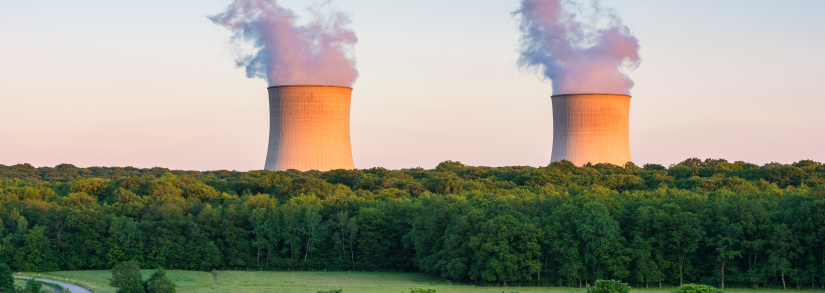
Disclaimer: This information is provided “as is” and does not constitute legal advice or any binding interpretation. Any approach to comply with regulatory or policy initiatives should be discussed with your own legal counsel and/or the relevant competent authority, as needed.
- Despite concerns over the inclusion of gas in the EU Taxonomy, reported EU Taxonomy-aligned revenue in portfolios may not be meaningfully impacted given the low state of disclosure and stringency of requirements.
- We found that gas-fired facilities have an average lifecycle emissions intensity well above the required “sustainable” levels set by the EU Taxonomy.
- Only 12 companies in the MSCI ACWI Investable Market Index implement or plan to implement abatement technology, though there was no conclusive evidence that any of them met all the requirements to be considered sustainable.
In March 2022, the EU adopted the Complimentary Climate Delegated Act (CCDA) setting conditions under which fossil-fuel-based gas (or “gas”) is considered a “sustainable” activity in the EU Taxonomy on Sustainable Activities (EU Taxonomy). Many European financial-market participants opposed this, fearing it could open the floodgates for gas to receive investment for climate-change-mitigation projects.1 Yet, it’s worth noting that the EU Taxonomy requirements remain challenging for operators to achieve, and we estimated that only a small portion of — if any — gas-fired operations met the technical screening criteria.
The CCDA provided two hard-to-achieve technical screening criteria related to emissions intensity, of which one must be met: Direct emissions intensity of less than 270g CO2e/kWh, applying only when the facility’s construction permit is granted before 2031, or lifecycle emissions intensity of less than 100g CO2e/kWh. The 270g CO2e/kWh direct emissions threshold is particularly notable as it allows for an increase in emissions intensity above the EU’s predetermined alignment threshold of 100g CO2e/kWh applied to other activities in the EU Taxonomy.2 Due to this exception, the direct emissions intensity threshold requires additional criteria to be met, such as evidence that the gas power generation replaced coal power generation within a 15% capacity range.3
To test whether gas-fired power generation is aligned with these criteria, the EU Taxonomy requires analysis of each gas facility operated by a company.4 However, the necessary information at the facility level is rarely disclosed. We found 197 companies in the MSCI ACWI Investable Market Index (IMI) that generated revenue from gas-fired power generation. As the exhibit below shows, of these companies, 77% disclosed entity-level Scope 1 direct emissions for all operations. This indicates that most of these companies measured direct emissions including their production of electricity at gas-fired facilities. However, only 44% of companies disclosed Scope 3 downstream emissions, suggesting that testing the lifecycle emissions requirements may be challenging at the entity level, let alone at the facility level required by the EU Taxonomy.
Disclosure rate of lifecycle emissions among the 197 gas-fired power generators
Data based on CDP and company disclosures of the 197 gas-fired power generators in the MSCI ACWI IMI as of January 2023. MSCI estimate unreported emissions from Scope 1 and 2 and unreported Scope 3 emissions per category based on our estimation model. Source: MSCI ESG Research
Investors have also highlighted the potential technological impossibility for gas-fired power generation to meet the technical screening criteria without investments in carbon capture and sequestration (CCS) or by switching to alternative fuels such as biogas.5 Our research echoed such concerns.
We estimated pure-play gas-fired power generators in the MSCI ACWI IMI to have an average direct emissions intensity of 480g CO2e/kWh and average lifecycle emissions intensity of 580g CO2e/kWh, both well above the respective thresholds.6 While a quarter of gas-fired power generators in the universe were involved in CCS, most were only in the research and development phase, as shown below. We found only 12 companies currently using or planning to use CCS or other abatement measures at their gas-fired facilities, though none of these companies have disclosed evidence suggesting the installed abatement technology was capable of capturing enough emissions to meet the threshold set by the EU Taxonomy.
Number of companies involved in CCS-related activities and fuel switch to biogas and bioenergy
Data based on company disclosures of the 197 gas-fired power generators in the MSCI ACWI IMI as of January 2023. Source: MSCI ESG Research
Disclosure gaps need to be plugged to be of use to investors
Investors may face challenges in assessing whether a company’s gas-fired facility is fully aligned with the EU Taxonomy because of gaps in company disclosures, especially related to Scope 3 emissions and amounts of emissions captured by CCS. Until these gaps are filled, the impact of including gas-fired activities in the EU Taxonomy may only have a minimal impact on investors’ portfolio alignment.
1Kira Taylor. “Investors worth €50 trillion call on EU to exclude gas from green finance taxonomy.” EURACTIV, Jan. 13, 2022.
2“Commission Delegated Regulation (EU) 2022/1214.” Official Journal of the European Union, March 2022.
3The capacity range of 15% means that eligible gas plant cannot exceed the replaced coal facility’s capacity by more than 15%. “Commission Delegated Regulation (EU) 2022/1214.” Official Journal of the European Union, March 2022.
4“Commission Delegated Regulation (EU) 2022/1214.” Official Journal of the European Union, March 2022.
5“Response to Complementary Delegated Act.” EU Platform on Sustainable Finance, Jan. 21, 2022.
6We consider pure-play gas-fired generators to be companies that derived more than 85% of revenues from natural gas-fired power generation and produced more than 85% of fuel mix through natural gas-fired sources.
